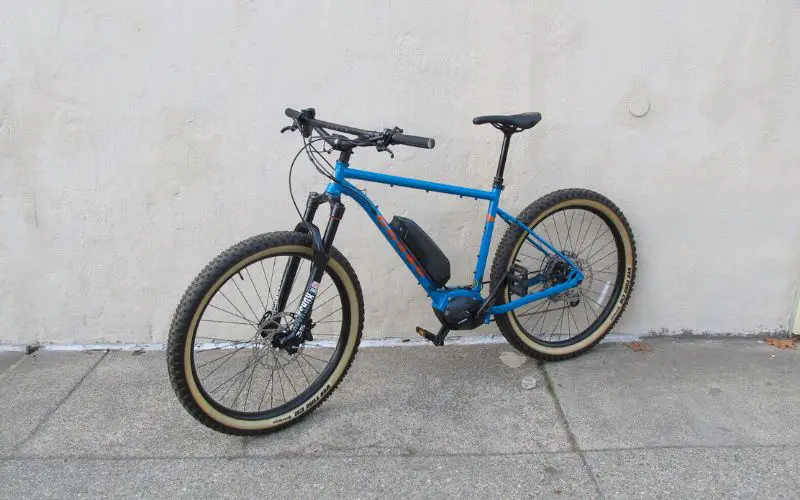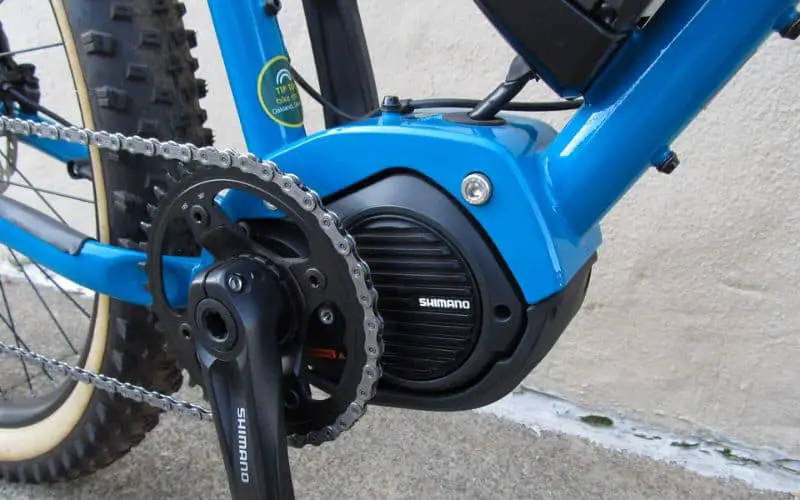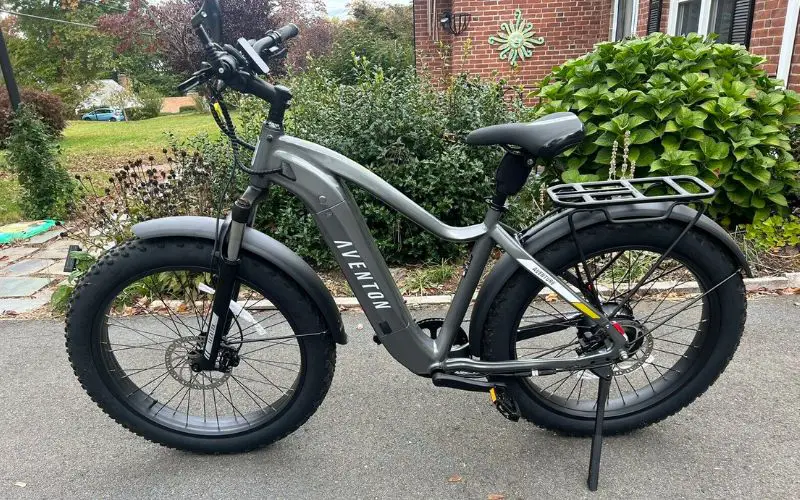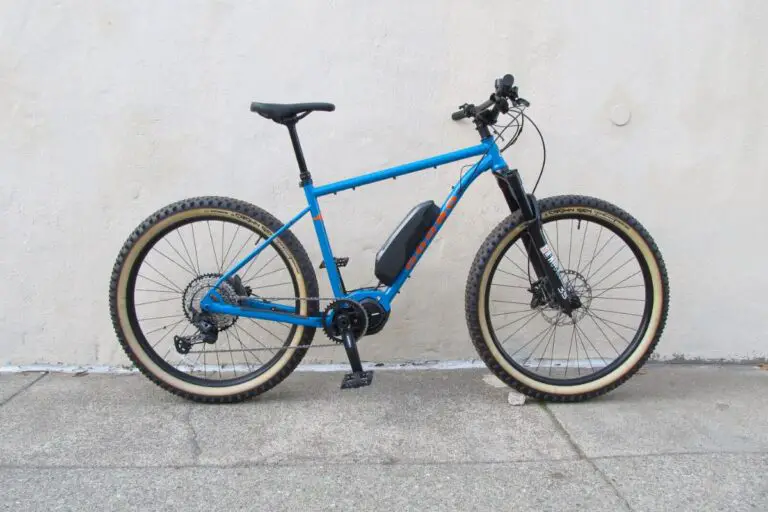Choosing your first electric bike feels like a puzzle.
There are so many options and features. It’s hard to know what’s right for you. Safety, comfort, and cost – these factors matter. This guide breaks down the complexity, making it easy to choose.
With this guide, selecting your ideal e-bike becomes simple.
The Electric Bike Phenomenon
What Are Electric Bikes?
Electric bikes, or e-bikes, combine traditional pedaling with the assistance of an electric motor. This integration allows you to enjoy the benefits of cycling while exerting less effort, particularly on uphill climbs or when covering long distances. E-bikes are made up of several key components:
- Electric Motor: Provides power to assist you while pedaling.
- Battery: Supplies electricity to the motor, typically rechargeable and varying in capacity.
- Controller: Manages the power flow from the battery to the motor.
- Pedal Assist System: Determines the level of motor assistance as you pedal.
When looking for the perfect e-bike, consider:
- Frame Design: Ensures comfort and matches your style.
- Battery Capacity: Affects how far you can go on a single charge.
- Motor Power: Influences the e-bike’s ability to climb hills and accelerate.
- Motor Placement: This can be in the hub of a wheel or mounted mid-frame. Each placement offers benefits like improved traction or a more natural riding feel.
- Battery Placement: Typically found either integrated into the frame or mounted on the rear rack. It can influence the bike’s handling and aesthetics.
- Pedal Assist Levels: This allows you to control the assistance you receive.
- Extra Features: Such as integrated lights for safety and folding mechanisms for storage.

The Rise of E-Bikes: A Brief Overview
The e-bike industry has been on an upward trajectory, gaining popularity across the globe. This growth stems from several factors:
- Technological Advancements: Continuous improvements in motor efficiency and battery technology.
- Design Diversity: From robust mountain e-bikes to foldable ones, there is now an e-bike for every type of cyclist.
- Sustainability: E-bikes are seen as a green alternative to fossil-fueled transportation, contributing to less traffic and lower emissions.
- Industry Impact: The rise of e-bikes has supported the cycling culture and created new standards within the transportation sector.
Understanding the Basics of Electric Bikes
E-Bike – How They Work
An electric bike, or e-bike, blends traditional cycling with an electrical twist, providing motorized assistance that makes pedaling more effortless. You’ll find the motor, usually nestled at the cranks or in the wheel hubs, lending you a smooth, balanced ride.
Mid-drive motors enhance your pedaling directly at the bike’s cranks, while rear hub motors push from the wheel, each offering unique benefits to your cycling experience.
Your e-bike is powered by a battery strategically placed to distribute weight evenly and keep the aesthetics sharp, especially in urban e-bike designs. And when it comes to speeds and assistance levels, e-bikes fall into different classes. You must know these to match the right e-bike to your riding style and stay in tune with e-bike regulations.
Electric Bike Components Demystified
Here’s what you need to know about the pieces that come together to define your ride:
Motors and Their Power Ratings
Electric Motor: It’s the heart of your e-bike, doling out power in watts. A higher wattage equals more muscle for conquering hills and quickening your commute.
- Mid-Drive Motor: Offers effective power directly where you pedal, aiding balance.
- Rear Hub Motor: Built into the rear wheel, it provides a distinct feel to your ride.
Motor Power: Depending on your route—hilly or flat—the motor’s power should cater to the challenge. Choose one that meets your needs without overwhelming your battery.

Battery Life: What to Expect
E-Bike Batteries: Key to your e-bike’s range—measured by the distance you can cover before needing a recharge. Note that it’s shaped by how much motor assistance you use, the terrain, and even the battery’s age.
- Charge Times: Allow ample charging and follow the manufacturer’s guidance to keep your battery healthy for years.
- Range Planning: Always estimate your trip length against your battery’s capacity to avoid running out of juice unexpectedly.
Selecting Your First Electric Bike
Factors to Consider When Choosing an E-Bike
Before picking your e-bike, take stock of what you’ll need for a comfortable, efficient ride.
Weight and Range:
- Choose a bike with a manageable weight for you to handle.
- Consider the battery range; it should cover your intended distance.
Cost versus Quality:
- While seeking a low-cost option is tempting, you get what you pay for when it comes to e-bikes. It’s about finding the right balance.
Comfort:
- Check for a comfortable seat and an upright position if you’re aiming for a commuter e-bike.
- Ensure the frames suit your body for a more pleasant ride.
Efficiency for Your City Routes:
- Evaluate if the e-bike can tackle your daily routes efficiently, especially in a city setting.

Types of Electric Bikes Explained
- Commuter E-Bikes are practical, often with built-in lights, fenders, and racks, suited for city environments and day-to-day use.
- Mountain E-Bikes are sturdy and designed for rough terrain, but they can be expensive and overwhelming for beginners due to their power and handling requirements.
- Folding E-Bikes provide the ultimate convenience in portability and storage, which is excellent for those with limited space or the need to combine cycling with public transport.
- Fat Tire E-Bikes are ideal for various terrains, providing stability and comfort.
The Benefits and Drawbacks of Riding an Electric Bike
Pros of Riding an Electric Bike
- Ease of use: You’ll find cycling less strenuous, thanks to the pedal-assist feature that boosts your power, letting you cover longer distances without excessive fatigue.
- Time-efficiency: Your commute could be quicker, as electric bikes help you maintain a consistent speed, even uphill.
- Inclusivity: Electric bikes make cycling more accessible. You can keep pace with peers whether you’re a cycling newbie or have differing fitness levels.
- Environmental impact: You’re doing your part for the planet by emitting no pollutants and reducing energy consumption compared to cars.
- Health benefits: You still get to exercise, which means you can get fit while enjoying the assistance when needed.
Cons of Electric Bike Ownership
- Cost: Be prepared to pay more upfront for an e-bike, and remember that maintenance costs can add up due to more complex components like motors and batteries.
- Weight: Notice the extra weight of your e-bike, especially if you have to lift it or run out of battery and need to pedal the old-fashioned way.
- Technical complexity: The technology may seem daunting at first, particularly if you’re not too tech-savvy, which might mean more trips to the bike shop for maintenance.
- Regulatory restrictions: Stay informed as e-bike regulations can vary, potentially affecting where you can enjoy your ride.

Practical Advice for New E-Bike Riders
Riding Your Electric Bike Safely
Essentials for a Safe Electric Bike Ride:
- Helmet: Make wearing a helmet a non-negotiable part of your cycling routine to protect your head.
- Lights and Reflective Materials: Increase your visibility with lights and reflective clothing, especially in low-light conditions.
- Braking System: Get familiar with the braking system of your e-bike. Hydraulic disc brakes are recommended for their efficiency, particularly when carrying extra weight or traveling down hills.
- Gear Shifting: Practice gear shifting to navigate various terrains smoothly, which is key in maintaining control and stability.
- Inspections: Regularly check tire pressure, brakes, and chain for wear and potential issues.
- Repair Kit: Carry a basic repair kit for on-the-go fixes to handle minor issues promptly.
Legal Requirements and Compliance
- Know Your Laws: Understand and adhere to the local e-bike laws, including age restrictions, helmet laws, and allowed paths or roads.
- Speed and Power: Be aware of your local area’s limit on power output and top speed for e-bikes to avoid fines.
Maintenance Essentials for E-Bike Longevity
Here are some periodic maintenance tasks:
- Battery Care: Regularly inspect your e-bike battery for optimum performance and follow the manufacturer’s instructions for charging to extend its life.
- Chain and Brakes: Clean and inspect the chain and brake pads to ensure they aren’t worn and are functioning correctly.
- Screws and Bolts: Keep all screws and bolts securely tightened to maintain a stable and safe ride.
- Motor Maintenance: Listen for any unusual sounds from the motor, whether a hub motor or mid-drive motor and address any issues immediately.
Troubleshooting Common E-Bike Issues
- Loss of Power: Verify the battery life and secure all connections.
- Motor Noise: Determine if the noise comes from a hub or mid-drive motor and consult the manual or a professional if necessary.
- Gear Shifting: Adjust the derailleur and check the condition of the cables if shifting becomes difficult.
- Braking: If braking performance dips, inspect the brake pads and disc for signs of wear or damage.
Regular maintenance is not just about prolonging your e-bike’s life; it’s about ensuring your safety and performance on every ride.
Recommended Electric Bikes for Beginners
Top Picks for New E-Bike Enthusiasts
You’ll want to start with a bike that’s intuitive, comfortable, and dependable. Here are a couple of beginner-friendly electric bikes known for their quality and ease of use.
- Priority Current: A commuter’s ally, offering a smooth ride with its powerful motor and extensive range. Equipped with rain fenders, it’s ready for any weather you might face in the city.
- Features: Long battery life, sturdy frame, and integrated lights.
- Lectric XP 3.0: This folding e-bike packs quality and convenience into one. Perfect if you’re navigating crowded streets or need a compact option for storage and transit.
- Battery: Sufficient for daily commutes.
- Extras: Folds quickly, competitively priced.
Frequently Asked Questions
If you’re new to e-bikes, you might have several questions about what to expect and how to maintain your new ride. Below, you’ll find some clear answers to help you navigate the world of e-bikes with ease:
What are the e-bike classes, and how do they differ?
– Class 1 e-bikes: Class 1 e-bikes are pedal-assist models that assist only when you are pedaling. The motor stops helping at 20 mph.
– Class 2 e-bikes: Class 2 models also have a maximum speed of 20 mph but feature a throttle assist, allowing you to ride without pedaling.
– Class 3 e-bikes: These are speedier, providing pedal assistance up to 28 mph. They often come with a speedometer. You will need a helmet, and these might only be allowed on some bike paths due to their higher speeds.
Do I need insurance for my e-bike?
E-bikes typically do not require insurance like a motorcycle or car. However, because e-bikes are more expensive than traditional bicycles, consider theft insurance or a rider on your homeowner’s policy for extra protection.
Is my e-bike considered a scooter or moped?
E-bikes are classified differently than scooters or mopeds. Scooters and mopeds generally have larger motors and can reach higher speeds. Therefore, they often require registration, insurance, and a driver’s license. E-bikes, limited to 20 mph for Class 1 and 2 and 28 mph for Class 3, typically don’t have these requirements.
What is the average battery life, and how can I maintain it?
E-bike batteries usually last 2 to 4 years or 1,000 to 1,500 charge cycles. To maintain battery health:
– Avoid extreme temperatures when storing your battery.
– Charge it regularly and keep it at least partially charged when not used.
– Use the charger provided by the manufacturer.
How much should I budget for an e-bike?
The budget for an e-bike can range significantly. Affordable models start around a few hundred dollars, while premium models can be several thousand dollars. Remember to account for the following:
– Initial purchase price.
– Maintenance costs, such as battery replacement and service checks.
– Accessories like locks and helmets for safety.
Always consider functionality, comfort, the type of terrain you plan to traverse, and the longevity of your chosen model. E-bikes are an investment in your transportation and enjoyment, so it pays to choose with care.

